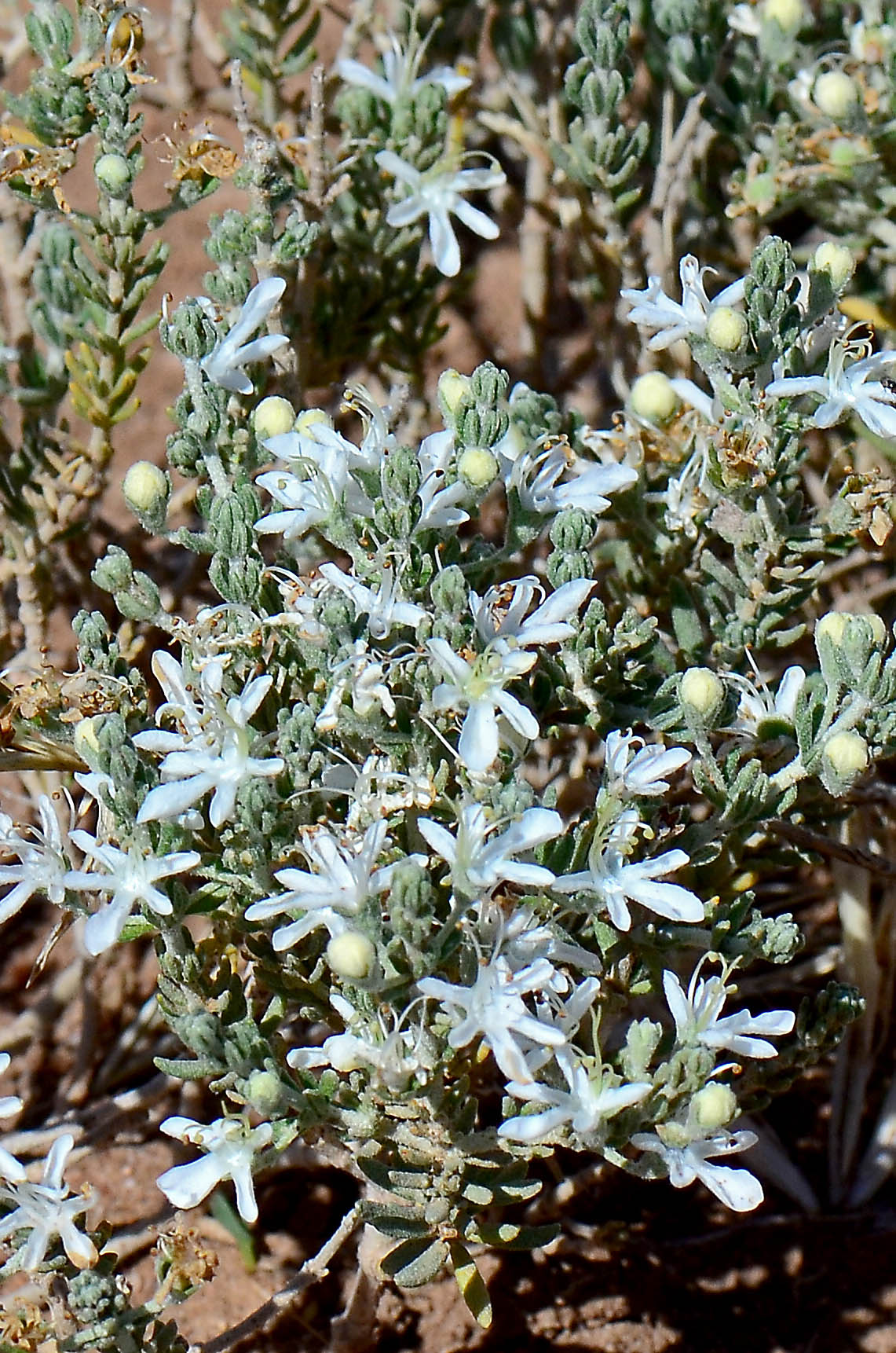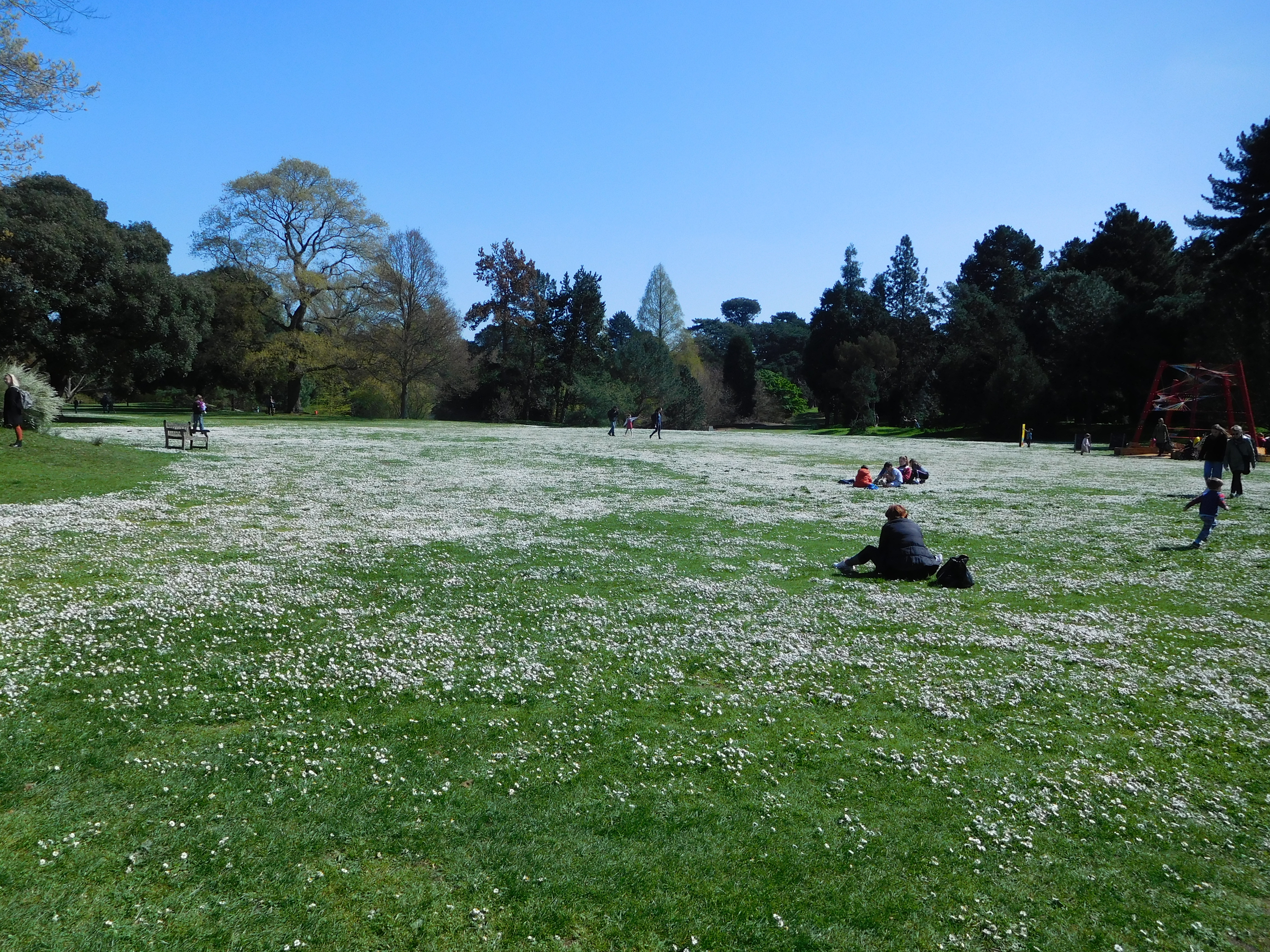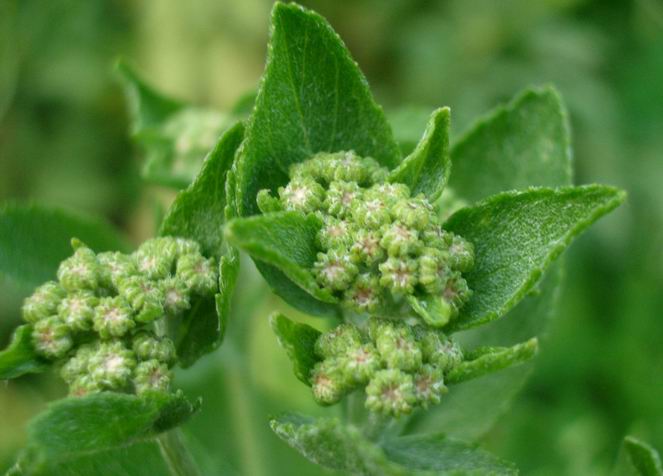|
Strewing Herbs
Strewing herbs are certain kinds of plants that are scattered (strewn) over the floors of dwelling places and other buildings. Such plants usually have fragrant or astringent smells, and many also serve as insecticides or disinfectants. Their use was widespread in England during the Middle Ages through to the 18th century. Historical use In the early Middle Ages, bathing had declined in England. As people got smellier, the use of fragrant herbs became more popular. They were used in all areas of the house, including kitchens, dining halls and bedrooms. The herbs were laid on the floor along with reeds, rushes, or straw, so that pleasant odours would be released when people walked on them. Certain plants would also help keep pests such as fleas at bay. In a typical medieval English monastery, for instance, the floor of the dormitory would have been strewn with rushes that were swept and replaced once or twice a year. Rich and poor households used strewing herbs and royal househo ... [...More Info...] [...Related Items...] OR: [Wikipedia] [Google] [Baidu] |
Middle Ages
In the history of Europe, the Middle Ages or medieval period lasted approximately from the late 5th to the late 15th centuries, similar to the post-classical period of global history. It began with the fall of the Western Roman Empire and transitioned into the Renaissance and the Age of Discovery. The Middle Ages is the middle period of the three traditional divisions of Western history: classical antiquity, the medieval period, and the modern period. The medieval period is itself subdivided into the Early, High, and Late Middle Ages. Population decline, counterurbanisation, the collapse of centralized authority, invasions, and mass migrations of tribes, which had begun in late antiquity, continued into the Early Middle Ages. The large-scale movements of the Migration Period, including various Germanic peoples, formed new kingdoms in what remained of the Western Roman Empire. In the 7th century, North Africa and the Middle East—most recently part of the Eastern Ro ... [...More Info...] [...Related Items...] OR: [Wikipedia] [Google] [Baidu] |
Rosemary
''Salvia rosmarinus'' (), commonly known as rosemary, is a shrub with fragrant, evergreen, needle-like leaves and white, pink, purple, or blue flowers, native plant, native to the Mediterranean Region, Mediterranean region. Until 2017, it was known by the scientific name ''Rosmarinus officinalis'' (), now a Synonym (taxonomy), synonym. It is a member of the sage family Lamiaceae, which includes many other medicinal and culinary herbs. The name "rosemary" derives from Latin ("dew of the sea"). Rosemary has a fibrous root system. Description Rosemary is an aromatic evergreen shrub with leaves similar to Tsuga, hemlock needles. It is native to the Mediterranean and Asia, but is reasonably hardy in cool climates. Special cultivars like 'Arp' can withstand winter temperatures down to about . It can withstand droughts, surviving a severe lack of water for lengthy periods. In some parts of the world, it is considered a potentially invasive species. The seeds are often difficult to s ... [...More Info...] [...Related Items...] OR: [Wikipedia] [Google] [Baidu] |
Marjoram
Marjoram (; ''Origanum majorana'') is a cold-sensitive perennial herb or undershrub with sweet pine and citrus flavours. In some Middle Eastern countries, marjoram is synonymous with oregano, and there the names sweet marjoram and knotted marjoram are used to distinguish it from other plants of the genus ''Origanum''. It is also called pot marjoram, although this name is also used for other cultivated species of ''Origanum''. History Marjoram is indigenous to Cyprus, the Mediterranean, Turkey, Western Asia, the Arabian Peninsula, and the Levant, and was known to the ancient Greeks and Romans as a symbol of happiness. It may have spread to the British Isles during the Middle Ages. Marjoram was not widely used in the United States until after World War II. The name marjoram (Old French: ''majorane''; ) does not directly derive from the Latin word (major). Marjoram is related to Samhain, the Celtic pagan holiday that would eventually become Halloween. It has also been used in ... [...More Info...] [...Related Items...] OR: [Wikipedia] [Google] [Baidu] |
Germander
''Teucrium'' is a cosmopolitan genus of flowering plants in the family Lamiaceae, commonly known as germanders. Plants in this genus are perennial herbs or shrubs, with branches that are more or less square in cross-section, leaves arranged in opposite pairs, and flowers arranged in thyrses, the corolla with mostly white to cream-coloured, lobed petals. Description Plants in the genus ''Teucrium'' are perennial herbs or shrubs with four-cornered stems, often with simple hairs and sessile glands. The leaves are arranged in opposite pairs, simple or with three leaflets sometimes with lobed or serrated edges. The flowers are arranged in a thyrse, sometimes in a cyme in leaf axils. The flowers have five more or less similar sepals fused at the base, and the corolla is white or cream-coloured with five lobes forming two lips. The upper lip is usually much reduced in size and the lower lip has three lobes, the central lobe usually larger than the side lobes. There are four stamens att ... [...More Info...] [...Related Items...] OR: [Wikipedia] [Google] [Baidu] |
Sweet Fennel
Fennel (''Foeniculum vulgare'') is a flowering plant species in the carrot family. It is a hardy, perennial herb with yellow flowers and feathery leaves. It is indigenous to the shores of the Mediterranean but has become widely naturalized in many parts of the world, especially on dry soils near the sea-coast and on riverbanks. It is a highly flavorful herb used in cooking and, along with the similar-tasting anise, is one of the primary ingredients of absinthe. Florence fennel or finocchio (, , ) is a selection with a swollen, bulb-like stem base that is used as a vegetable. Description ''Foeniculum vulgare'' is a perennial herb. It is erect, glaucous green, and grows to heights of up to , with hollow stems. The leaves grow up to long; they are finely dissected, with the ultimate segments filiform (threadlike), about wide. (Its leaves are similar to those of dill but thinner.) The flowers are produced in terminal compound umbels wide, each umbel section having 20–50 ... [...More Info...] [...Related Items...] OR: [Wikipedia] [Google] [Baidu] |
Bellis Perennis
''Bellis perennis'' (), the daisy, is a European species of the family Asteraceae, often considered the archetypal species of the name daisy. To distinguish this species from other plants known as daisies, it is sometimes qualified as common daisy, lawn daisy or English daisy. Description ''Bellis perennis'' is a perennial herbaceous plant growing to in height. It has short creeping rhizomes and rosettes of small rounded or spoon-shaped leaves that are from long and grow flat to the ground. The species habitually colonises lawns, and is difficult to eradicate by mowing, hence the term 'lawn daisy'. It blooms from March to September and exhibits the phenomenon of heliotropism, in which the flowers follow the position of the sun in the sky. The flowerheads are composite, about in diameter, in the form of a pseudanthium, consisting of many sessile flowers with white ray florets (often tipped red) and yellow disc florets. Each inflorescence is borne on a single leafless stem , ... [...More Info...] [...Related Items...] OR: [Wikipedia] [Google] [Baidu] |
Primula Veris
''Primula veris'', the cowslip, common cowslip, or cowslip primrose ( syn. ''Primula officinalis'' ), is a herbaceous perennial flowering plant in the primrose family Primulaceae. The species is native throughout most of temperate Europe and western Asia, and although absent from more northerly areas including much of northwest Scotland, it reappears in northernmost Sutherland and Orkney and in Scandinavia. This species frequently hybridizes with other ''Primulas'' such as the common primrose ''Primula vulgaris'' to form false oxlip ( ''Primula'' × ''polyantha'') which is often confused with true oxlip (''Primula elatior''), a much rarer plant. Names The common name ''cowslip'' may derive from the old English for cow dung, probably because the plant was often found growing amongst the manure in cow pastures. An alternative derivation simply refers to slippery or boggy ground; again, a typical habitat for this plant. The name "cowslop" derived from Old English still exists in ... [...More Info...] [...Related Items...] OR: [Wikipedia] [Google] [Baidu] |
Costmary
''Tanacetum balsamita'' is a perennial temperate herb known as costmary, alecost, balsam herb, bible leaf, or mint geranium. Description Costmary is a perennial with oval serrated leaves and can grow up to high. During summer, it shows small, yellow, button-shaped blossoms which appear in clusters. Name The English name 'costmary' stems from 'costus of Saint Mary'. Also, in other languages, it is associated with the Virgin Mary, most probably because it is sometimes used to treat women's diseases. Origin and spread The plant seems to have originated in the Mediterranean. Whether the plant called "balsamita" described by Columella in 70 AD is the same is unclear. According to Heinrich Marzell, it was first mentioned in 812 in a plant catalogue. Costmary was widely grown since the medieval times in herb gardens until the late 19th and early 20th centuries for medical purposes. Nowadays, it has mostly disappeared in Europe, but is still widely used in southwest Asia. It was used ... [...More Info...] [...Related Items...] OR: [Wikipedia] [Google] [Baidu] |
Basil
Basil (, ; ''Ocimum basilicum'' , also called great basil, is a culinary herb of the family Lamiaceae (mints). It is a tender plant, and is used in cuisines worldwide. In Western cuisine, the generic term "basil" refers to the variety also known as sweet basil or Genovese basil. Basil is native to tropical regions from Central Africa to Southeast Asia. In temperate climates basil is treated as an annual plant, however, basil can be grown as a short-lived perennial or biennial in warmer horticultural zones with tropical or Mediterranean climates. There are many varieties of basil including sweet basil, Thai basil (''O. basilicum'' var. ''thyrsiflora''), and Mrs. Burns' Lemon (''O. basilicum var. citriodora''). ''O. basilicum'' can cross-pollinate with other species of the ''Ocimum'' genus, producing hybrids such as lemon basil (''O. × citriodorum'') and African blue basil (''O. × kilimandscharicum''). Etymology The name "basil" comes from the Latin , and the Greek (), m ... [...More Info...] [...Related Items...] OR: [Wikipedia] [Google] [Baidu] |
Tansy
Tansy (''Tanacetum vulgare'') is a perennial, herbaceous flowering plant in the genus ''Tanacetum'' in the aster family, native to temperate Europe and Asia. It has been introduced to other parts of the world, including North America, and in some areas has become invasive. It is also known as common tansy, bitter buttons, cow bitter, or golden buttons. The Latin word ''vulgare'' means "common". Description Tansy is a flowering herbaceous plant with finely divided compound leaves and yellow, button-like flowers. It has a stout, somewhat reddish, erect stem, usually smooth, tall, and branching near the top. The leaves are alternate, long and are pinnately lobed, divided almost to the center into about seven pairs of segments, or lobes, which are again divided into smaller lobes having saw-toothed edges, giving the leaf a somewhat fern-like appearance. The roundish, flat-topped, button-like, yellow flower heads are produced in terminal clusters from mid-to-late summer. The ... [...More Info...] [...Related Items...] OR: [Wikipedia] [Google] [Baidu] |
Salvia Officinalis
''Salvia officinalis'', the common sage or just sage, is a perennial, evergreen subshrub, with woody stems, grayish leaves, and blue to purplish flowers. It is a member of the mint family Lamiaceae and native to the Mediterranean region, though it has been naturalized in many places throughout the world. It has a long history of medicinal and culinary use, and in modern times it has been used as an ornamental garden plant. The common name "sage" is also used for closely related species and cultivars. Names ''Salvia officinalis'' has numerous common names. Some of the best-known are sage, common sage, garden sage, golden sage, kitchen sage, true sage, culinary sage, Dalmatian sage, and broadleaf sage. Cultivated forms include purple sage and red sage. The specific epithet ''officinalis'' refers to plants with a well-established medicinal or culinary value. Taxonomy ''Salvia officinalis'' was described by Carl Linnaeus in 1753. It has been grown for centuries in the Old World f ... [...More Info...] [...Related Items...] OR: [Wikipedia] [Google] [Baidu] |
Santolina Chamaecyparissus
''Santolina chamaecyparissus'' ( syn. ''S. incana''), known as cotton lavender or lavender-cotton, is a species of flowering plant in the family Asteraceae, native to the western and central Mediterranean. Nomenclature The specific epithet ''chamaecyparissus'' means "like ''Chamaecyparis''" (ground cypress), though it is not closely related to that plant. It is also not closely related to either cotton or lavender, despite its common name "cotton lavender". Recognized varieties or subspecies are * var. ''etrusca'' Lacaita ≡ ''S. etrusca'' (Lacaita) Marchi & D'Amato * subsp. ''magonica'' O. Bolòs, Molin. & P. Monts. ≡ ''S. magonica'' (O. Bolòs, Molin. & P. Monts.) Romo, = var. ''teucrietorum'' O. Bolòs & Vigo * var. ''pectinata'' f. ''insularis'' Gennari ex Fiori ≡ ''S. insularis'' (Gennari ex Fiori) Arrigoni * var. ''vedranensis'' O. Bolòs & Vigo ≡ ''S. vedranensis'' (O. Bolòs & Vigo) L. Sáez, M. Serrano, S. Ortiz & R. Carbajal Description It is a small evergreen ... [...More Info...] [...Related Items...] OR: [Wikipedia] [Google] [Baidu] |







